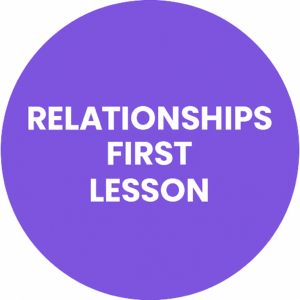
Set the Stage for Hard Conversations
June 3, 2025
How to Handle Awkward or Offensive Comments
June 18, 202560 Minute Classroom Agreements Lesson
This classroom-ready lesson guides educators through a structured process to build inclusive norms rooted in fairness, student voice, and civic responsibility.
This lesson was developed by Greater Good in Education at UC Berkeley in partnership with Harvard's Making Caring Common.
Lesson Overview
1Step 1: Introduction (10-12 Min)
Start by asking students what they think a “norm” is and why shared expectations might matter in a group setting like a classroom. Explain that norms are agreements about how we treat one another—and they help build trust, safety, and a sense of belonging. Share a couple of sample norms to illustrate. Next, have students quietly journal about unspoken rules in their own lives—at home, in teams, or among friends. Invite a few to share examples. Then ask students to reflect in writing: How should we treat each other? Who has power here? How are decisions made?
2Step 2: Small Group Brainstorm (15–20 min)
Have students work in small groups to suggest ground rules for respectful discussions. They should write each idea on a sticky note or digital board. Offer examples like “challenge ideas, not people” or “mistakes help us grow.” After 10 minutes, display the notes and let students do a silent gallery walk, then group similar ideas together into categories.
3Step 3: Gallery Walk and Clustering (15-20 min)
Step 3: Gallery Walk & Clustering – Instructions for Teachers
Post All Ideas:
Have each small group post their sticky notes (or digital responses) on a designated wall, whiteboard, or large chart paper. Be sure they are spread out and easy to read.
Silent Gallery Walk (5 minutes):
Ask students to walk silently around the room to read all the ideas. Encourage them to look for recurring themes, phrasing, or values that show up in multiple responses.
Clustering (5–7 minutes):
Once everyone has read the notes, guide the class in grouping similar or overlapping ideas together. Students can move sticky notes to form categories, or use colored markers or symbols to group ideas digitally.
Discuss Groupings:
Invite a few students to share observations:
Which ideas came up the most?
Were there any surprising or unique suggestions?
What values or goals seem to repeat?
Optional Tip:
If using digital tools (e.g., Jamboard, Padlet, Google Slides), you can assign groups to cluster ideas in breakout rooms or assign one student as the "digital sorter."
4Step 4: Collaborative Grouping (20 Min)
Bring the class together and have students read one group of similar ideas at a time. Collaboratively name each group using clear, positive language (e.g., turn “don’t talk too much” into “share talk time”). Repeat until most sticky notes are covered. Discuss any leftover ideas and decide where they fit. If needed, revise or add norms—but be transparent and respectful when making adjustments for clarity, fairness, or inclusion.
5Step 5 Reflection and Closing (8-10 min)
Share the Recommended Classroom Norms and Moral Principles with the class and compare them with the norms students created. Invite students to identify any overlaps, gaps, or adjustments needed. Emphasize that these norms reflect fairness, justice, and human dignity. Once finalized, have a couple of students write the agreed-upon norms on chart paper titled “Classroom Norms” and display it prominently. Before wrapping up, ask students if anything feels missing or needs to be revised to ensure everyone feels respected, safe, and heard in class.
Need Agreements Right Now?
Consider using the Conversation Agreements from Living Room Conversations. Rooted in a research-based framework, these conversations bring together people with different backgrounds and viewpoints to engage in structured, small-group discussions.
The model emphasizes active listening, shared values, and curiosity over debate.
Designed for ease of use in homes, schools, workplaces, and communities, Living Room Conversations has become a trusted approach to depolarization and civic connection.




